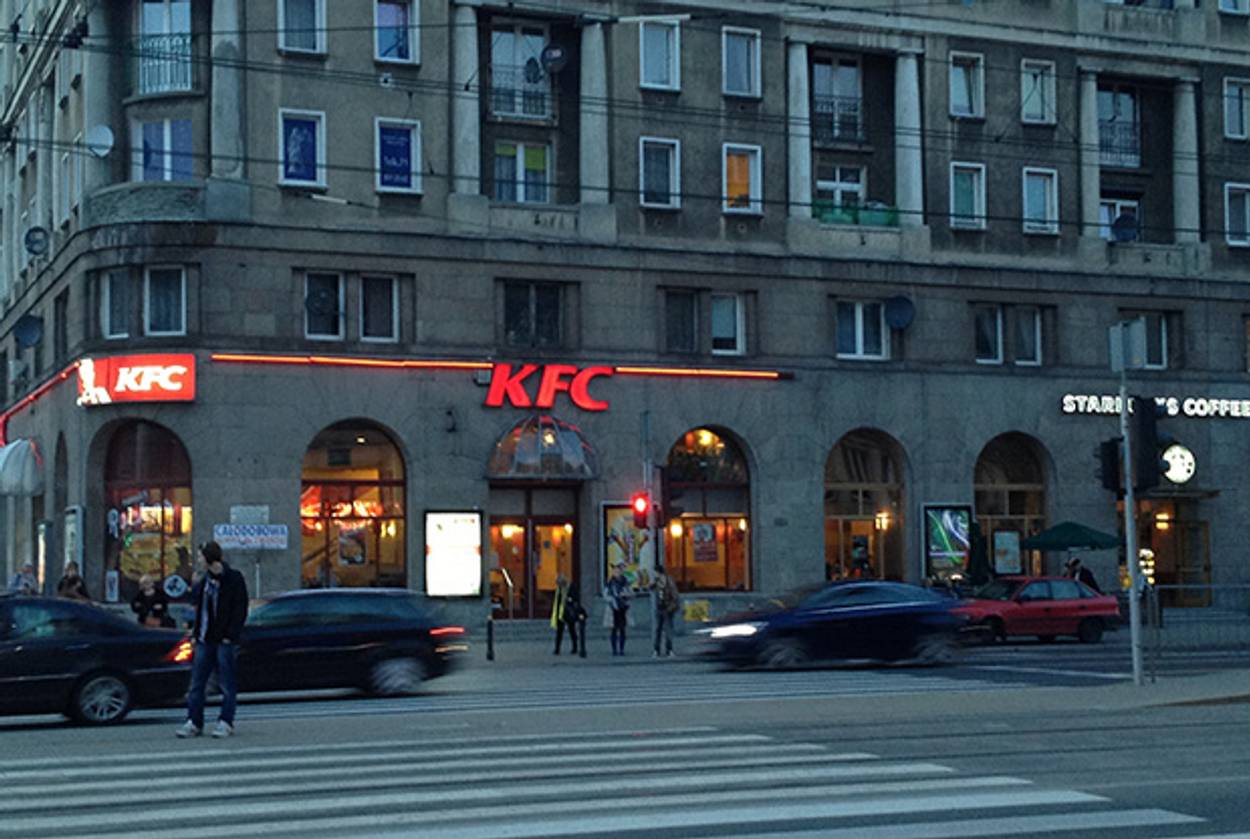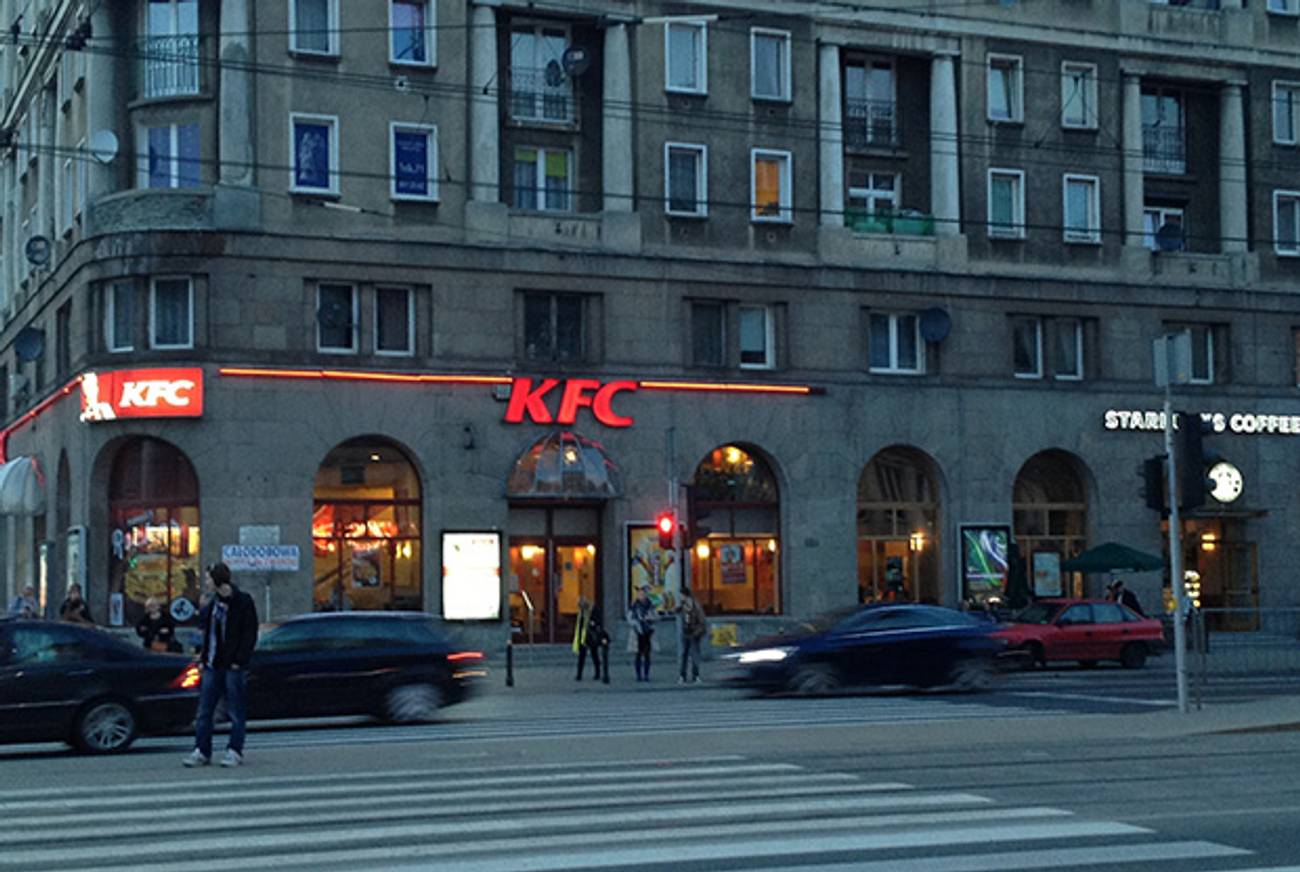The Invisible City
What’s the best way to make history come alive? One guide’s answer: stories.




One day a few years ago, Agnieszka Haska, a cultural anthropologist, science fiction writer and reviewer, and a passionate enthusiast for all that is missing in Warsaw, was riding the tram down busy Jana Pawla II Avenue, a post-war thoroughfare that cuts through the middle of what was once the Warsaw Ghetto. On an mp3 player, she was listening to an interview she had collected from Ghetto survivor Gutta Sternbuch (author of Memories of a Vanished World) and it dawned on Haska that the place that Sternbuch was talking about was right outside the window. She started to cry, because everything she heard, she suddenly realized, was right there–but not there at all.
Haska, who is 33 years old and a ball of intelligent and ardent energy surrounding crystalline blue eyes, recounted this episode to me over coffee this week near the Novotel Centrum, the second-greatest, she said, of the city’s Soviet-era redoubts of luxury after the Mercure Grand. She was sweating in the unseasonably warm April weather because she had been running around all day, first at the plaque unveiling at the Hotel Polski, and then at the hotel, where she had an appointment with one of the survivors preparing for the ceremonies commemorating the 70th anniversary of the ghetto uprising. What made her cry, she explained, was the realization that not only were the Jews of pre-war Warsaw mostly gone, but so were nearly all of the streets, stores, cafes and other physical landmarks of the pre-war city that was reduced to an open field of rubble by the Germans after the Jewish and Polish uprisings in 1943 and 1944.
Haska is not Jewish; she was raised Catholic. She is also, she said, “not addicted to the macabre.” Instead, she is a believer in “the power of words” who has turned herself into a kind of one-woman living-museum curator of inestimable value. She sometimes leads tailored tours, carrying a laminated map showing the layers of history in different colors, and images, on her tablet computer, so that one can compare the city’s physical past with the present. She makes a point of showing younger groups where Kozla street once hosted what she likes to call “Smuggler’s Wall Street,” along the ghetto wall, where tubes had been set up to move milk in and out, and where local gangsters set prices on the black market.
“If you go digging you will uncover something,” she said. Every month or so in Warsaw, there’s a bomb alert, as the city’s busy construction crews expose unexploded bombs and shells from the war. The law requires builders to employ archaeologists at every foundation dig, and the Warsaw metro now keeps historical researchers on staff in anticipation of the eventual expansion to a second line.
In addition to human ignorance and inattention, there are also emotional walls we erect to protect ourselves from the unruly and terrifying vastness of history. Haska once met a woman who insisted that her family had lived in a Warsaw apartment since before the war–confronting the historically-oriented anthropologist with the absurdity of explaining the impossibility of this person’s conviction, since the building had served as SS headquarters.
By privileging historical imagination over recreation or commemoration, Haska’s approach to the city tends to relegate monuments, statues, plaques, and much of what makes up the fabric of modern urban space to a kind of secondary relevance. “You cannot show only monuments,” she told me. “They have their role but they do not show that life and death happened here.” Reading a copy of a letter, doing “head exercises,” as she called them, hearing the words of a survivor, can be a more emotionally jarring experience than standing in a place and only seeing what’s actually in front of you.
The work of learning from ghetto survivors can cause “a sadness at the bottom of your soul,” Haska admits. But then the day ends, and you ride the tram looking out the window, and you dream up new versions of old lives and new lives, and repopulate what she likes to call “some kind of ghost town”: The city of Warsaw.
Matthew Fishbane is Creative Director at Tablet magazine.